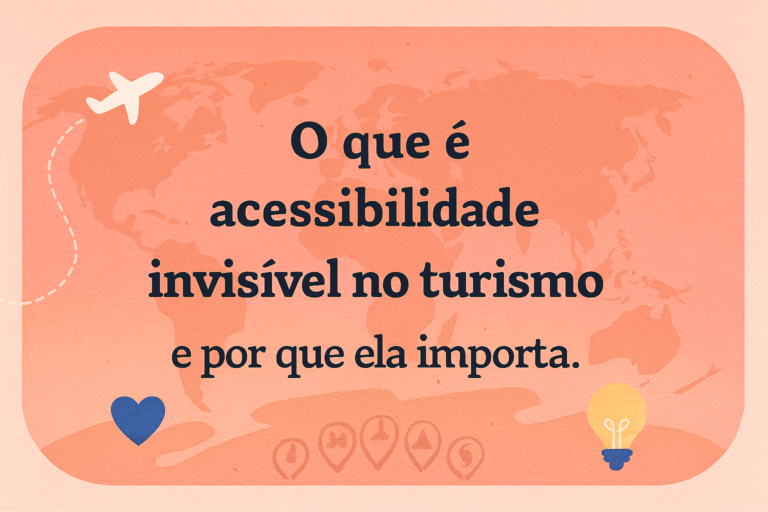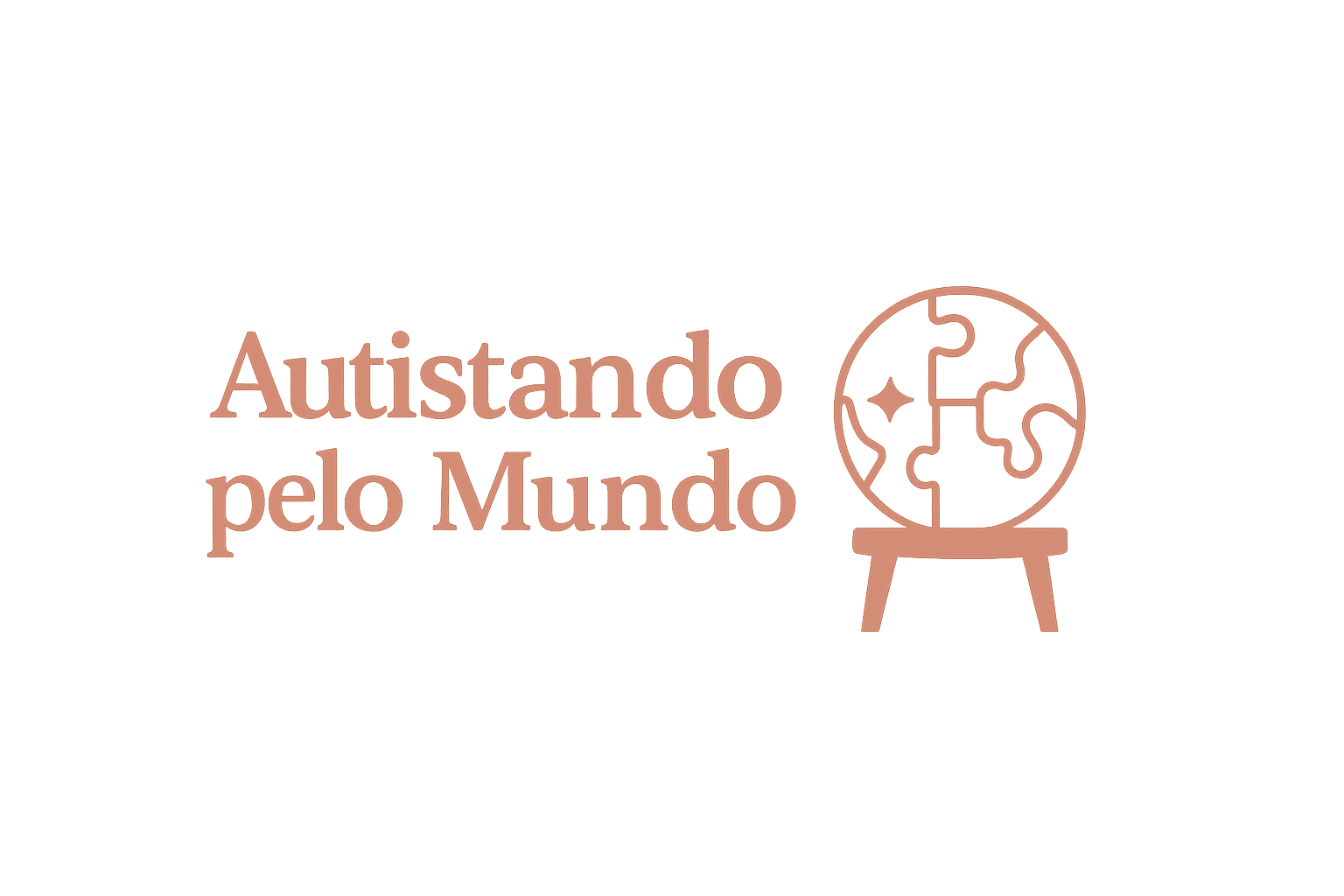✨ What is invisible accessibility and why it matters in tourism
When we talk about accessibility in tourism, many people immediately think of ramps, elevators, handrails, tactile surfaces, and preferential parking ♿. All of these are essential. But there's one dimension that almost never appears in brochure photos: invisible accessibility 👀.
It includes clear communication 🗣️, team training 👩🏫, empathy 💛, and small flexibilities 🔧 that aren't immediately apparent, but that make the journey much more welcoming, safe, and enjoyable for those who need support.
🔎 What does invisible accessibility mean?
Invisible accessibility is the set of practices, attitudes and services that allow for the full participation of all people—without relying solely on physical adaptations. It's the part of inclusion that doesn't jump out at you in photos, but determines whether the experience will be positive ✅ or frustrating ❌ for an atypical family or person with a disability.
Practical everyday examples:
- 🧩 Employee training for different disabilities and sensory profiles.
- 📖 Menus and materials in plain language and/or with pictograms.
- ⏩ Priority service without public embarrassment.
- 🌐 Clear information on the website about preferential queues and adaptation policies.
- 👫 Entrance with companion when necessary in attractions and activities.
- 🕰️ Flexible schedules and rules when there is a specific need.
💡 Why does invisible accessibility matter so much in tourism?
Traveling should be for everyone 🌍. However, families with autistic children, people with reduced mobility, the elderly, and other groups face barriers that don't appear on the map: lack of information, unprepared staff, and overly strict rules. The result? Anxiety, stress, and negative experiences 😞.
With invisible accessibility, the scenario changes: welcoming teams, objective communication and small adjustments generate unforgettable experiences ✨, build customer loyalty 💙 and create spontaneous advertising (the famous digital “word of mouth”) 📣.
For autistic people, for example, crowded and unpredictable environments can trigger meltdowns. briefings clear, possibility of reduced queue, quiet rooms or sensory rooms and a prepared team make all the difference 🧠🌿.
🧭 Practical examples in everyday tourism
How to apply invisible accessibility in practice — from check-in to “see you soon”:
- Clear communication 🗺️: objective signage, simple language, pictograms and accessibility FAQ on the website.
- Team training 🎓: regular training, service scripts and simulations.
- Smart flexibility 🔄: Adjust policies when specific support is needed.
- Pause environments 🛋️: sensory room, quiet area or adaptation time before the activity.
- Human service 🤝: listen, validate, adapt — without judgment.
👨👩👧 Impact on atypical families (and the economy)
Many families avoid traveling for fear of not being understood. A gesture of empathy—such as allowing a child to wear headphones 🎧, bringing a guardian along, or offering a calmer itinerary—can transform the experience from "avoiding" to "loving to return" 💞.
And there's an economic impact 💰: destinations that invest in accessibility (including invisible accessibility) expand their market, increase their average stay and ticket per visit, and gain a positive reputation—something that weighs heavily on purchasing decisions.
🏨 For entrepreneurs: how to get started (without spending a fortune)
Best practices that fit any budget:
- 📋 Create a simple protocol of inclusive care and review it quarterly.
- 🧠 Perform short and continuous training (up to 1h) with case simulations.
- 🪧 Standardize signaling and materials with simple and predictable language.
- 📞 Make available contact channel for specific needs before the visit.
- 🛟 Have a reception plan for sensory crisis (low light, water, quiet place).
- 📝 Collect feedback of families and implement continuous improvements.
Extra tip: define a “focal point of inclusion” on the team 👤, responsible for training colleagues, keeping materials up to date and being a reference in sensitive situations.
🧰 Quick checklist for your team
- ✅ Do we know how to explain accessibility policies in a simple way?
- ✅ Do we have a quiet alternative/break area?
- ✅ Does our team know how to act in the event of a sensory crisis?
- ✅ Does the website have a clear and up-to-date accessibility page?
- ✅ Is there autonomy to relax rules when necessary?
📣 Communication that welcomes (online and offline)
The experience begins before the trip: on the website, social media, and emails. Publish a accessibility guide With photos, average wait times, noise levels 🔊, escort policies, and useful contacts. Avoid jargon; use direct and inclusive language.
In person, anticipate expectations: Explain steps, timing, and alternatives. Small warnings prevent major frustrations.
🚀 Next steps for destinations and attractions
- Map visitor journeys 👣 and identify stress points.
- Implement high-impact/low-cost improvements first ⚡.
- Create a training calendar 📆 and simple quality indicators.
- Share your achievements responsibly (without “inclusion marketing”) 🧭.
✅ Conclusion
Invisible accessibility is not a substitute for ramps and elevators — it complete and enhances physical adaptations. It's human care, clear communication, and empathy that ensure memorable trips for everyone ✨.
Investing in this pillar means building a more sustainable tourism fair, competitive and sustainable — good for people, brands and destinations 🌿.
Did you like the content? Share 💌 and access more inclusive guides on Autistando pelo Mundo.

📣 Share your inclusion experience!
Have you had a positive accessibility experience at a park, hotel, restaurant, or other location? Your story could help other families plan more inclusive trips.
Send your report and it may appear here on the website, in our section Reviews or General Tips!

Don't miss any tips!
Sign up and receive our inclusive tourism experiences directly to your email.
Want to make tourism more inclusive?
We are open to partnerships with accessible spaces, inclusive inns and projects that value diversity.
Get in touch and let's talk!
